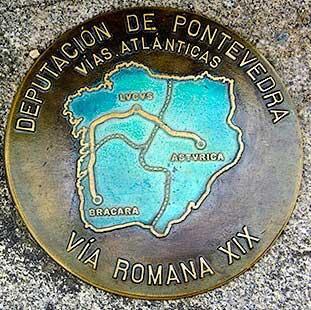Vías Atlánticas - Vías romanas
Nearest city:
Vilagarcía de Arousa
Pontevedra
Spain
This Roman road, also known as the Antonine Itinerary (Bracara Augusta - Lucus Augusti), dates from the 2nd century C.E. and connects the former Roman conventus (administrative districts) of Braga and Lugo. It was the longest road in the northwest of the Iberian Peninsula, about 500 kilometres long.
Roman roads were built by the Roman Imperial State in order to articulate the territory and to join the capital cities of the different Conventus Iuridici (administrative capitals of the Roman era).
These ancient roads acted as an important backbone and a key factor in socio-economic and commercial dynamization. In addition, they had many other functions: strategic and military (defence, transportation of troops), fiscal (tax collection, people and goods control) and contributed to the reorganization of the territory.
It connected the cities founded by Emperor Augustus in Gallaecia, Bracara Augusta (Braga) and Lucus Augusto (Lugo), reaching Asturica Augusta (Astorga), in order to provide the troops in the northwest of the Iberian Peninsula with basic goods (wheat, wine, salt-preserved foods…), which gave the infrastructure a great commercial value.
This Roman road goes from Tui to Pontecesures and passes through Pontevedra, and the itinerary can be completed in 4 stages:
1st stage: Tui - Redondela
2nd stage: Redondela - Pontevedra
3rd stage Pontevedra - Caldas de Reis
4th stage Caldas de Reis - Pontecesures
Rate this resource
Typology of the route
Linear
Total length (km)
100 km
I.G.N. cartography
Hojas I.G.N., escala 1:25:000. 185-II, 152-IV y 152-II
Landscape interest of the surroundings
Moderate
Description of the environment
Rural
Difficulty
Under
Itinerary (M.I.D.E.)
2
Displacement (M.I.D.E.)
2
Effort (M.I.D.E.)
2
Medium (M.I.D.E.)
2
State of conservation
Good
Recommended material
Ropa y calzado cómodo




